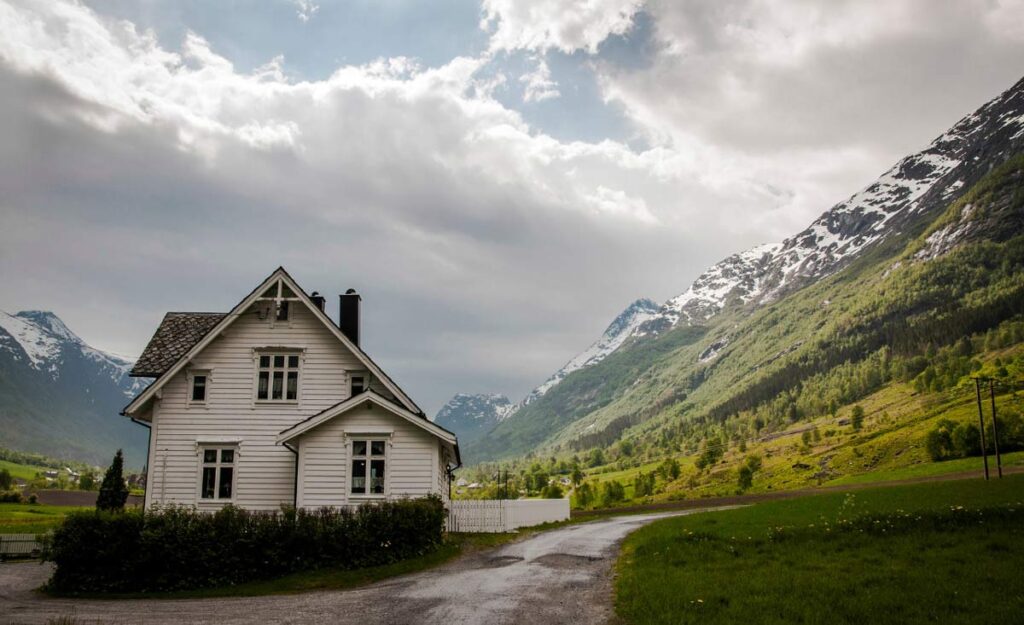Oslo, the capital and largest city of Norway, is a travel destination that beautifully combines rich history, modern culture, and breathtaking natural surroundings. Nestled at the head of the Oslofjord and surrounded by lush green hills and forests, Oslo offers an unparalleled range of activities for travelers seeking both adventure and insight into Scandinavian heritage. Whether you’re fascinated by art, curious about Viking history, or eager to indulge in outdoor activities, Oslo has something that caters to every interest. In this two-part article, we’ll dive into 17 must-do activities to fully experience the Nordic charm of Oslo.
The Top Cultural and Historical Attractions in Oslo
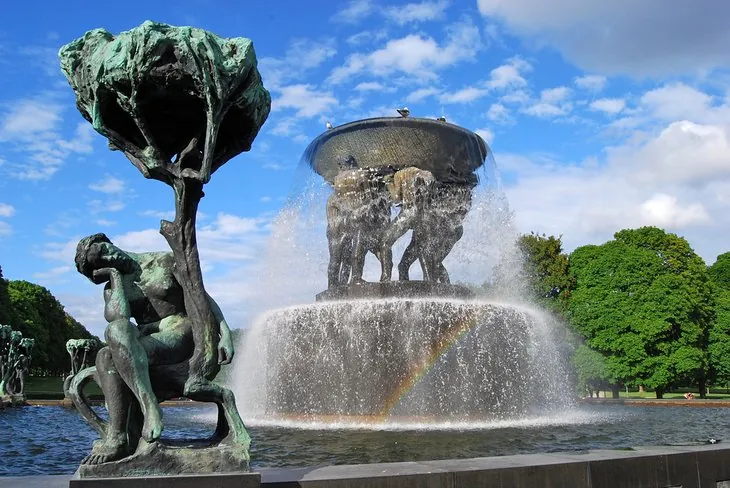
Oslo is an enchanting city that captivates visitors with its harmonious balance of urban sophistication and unparalleled proximity to nature. Known for its vibrant arts scene, cutting-edge architecture, and deep connections to Norway’s storied past, Oslo serves as a gateway into the Scandinavian way of life. This Nordic gem is home to world-renowned museums, historic landmarks, and scenic waterfronts that make it a bucket-list destination for globetrotters.
One of the unique things about Oslo is how it invites exploration—whether it’s walking through centuries-old streets, visiting iconic cultural institutions, or simply taking in the serene landscapes along its fjords. With the city being compact and easily navigable, tourists are spoiled for choice with activities ranging from admiring Gustav Vigeland’s sculptures to discovering Viking artifacts preserved through the ages.
This article offers a detailed itinerary, ensuring you don’t miss any of the highlights Oslo has to offer. From historical sites like Akershus Fortress to modern masterpieces like the Oslo Opera House, we’ll guide you on an unforgettable journey through this fascinating Nordic city.
1. Visit the Vigeland Sculpture Park
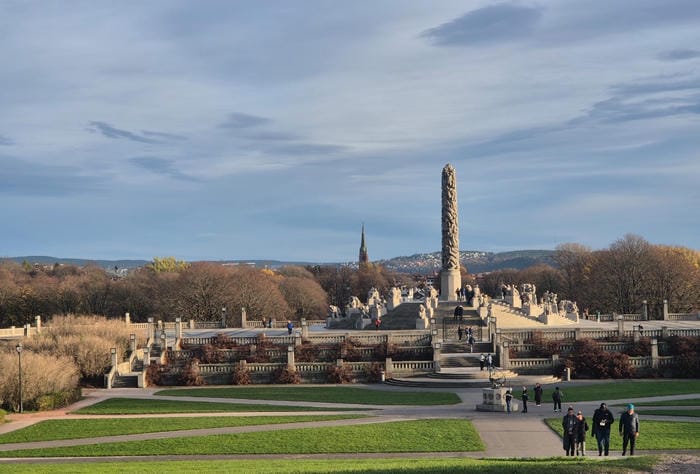
Arguably one of Oslo’s most iconic attractions, the Vigeland Sculpture Park (or Vigelandsparken) is a celebration of human emotion and connection. Located within Frogner Park, this open-air museum features over 200 sculptures by Gustav Vigeland, each telling a story in breathtaking detail.
The centerpiece of the park is the Monolith, a massive column with 121 entwined human figures carved into a single block of granite. Another standout sculpture is the Sinnataggen (The Angry Boy), a small but striking piece that has become a cultural icon for Norwegians. Each statue represents different aspects of the human condition—love, despair, relationships—all brought to life through intricate craftsmanship.
While entry is free, it’s best to set aside at least two hours to fully immerse yourself in Vigeland’s work. Mornings and evenings are quieter times to visit, making it easier to appreciate the art uninterrupted. If you’re traveling in the summer, the nearby rose garden provides an added layer of beauty to your visit.
2. Explore the Munch Museum
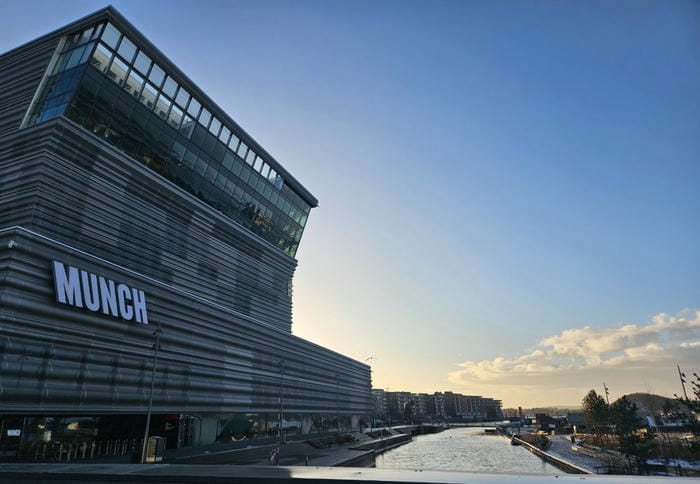
A tribute to the life and work of one of Norway’s most legendary artists, the Munch Museum is a must-see for art enthusiasts. Edvard Munch, best known for his iconic piece “The Scream,” revolutionized modern art with his emotive style and psychological depth, and this museum is home to the largest collection of his works.
Spread across stunning modern galleries, the museum features numerous renditions of “The Scream,” alongside celebrated works like “Madonna” and “The Dance of Life.” Interactive multimedia exhibits shed light on Munch’s creative process, personal struggles, and profound influence on global art movements.
Recently relocated to an architecturally avant-garde building by Oslo’s waterfront, the museum is as much a spectacle for its structure as its contents. The rooftop café offers panoramic views that make it a perfect pit stop after an inspiring tour. Pro Tip: Visit earlier in the day to avoid crowds, and consider booking tickets online to save time.
3. Walk on the Roof of the Oslo Opera House
A highlight of modern Norwegian architecture, the Oslo Opera House invites visitors to experience not only its performances but also its breathtaking design. Situated in the Bjørvika district by the Oslofjord, the building’s angular marble façade resembles a glacier emerging from the water.
The most unique feature of the Opera House is its walkable roof—an open space that doubles as a viewing platform. Whether you’re in search of stunning views of the fjord or simply want to experience the seamless blend of architecture and nature, the roof walk is undoubtedly worth it. The magic intensifies during sunset, where the reflection of the building on the fjord’s surface creates a picture-perfect scene.
Inside, the Opera House hosts world-class performances, from opera to ballet, with an interior design that radiates warmth thanks to its oak-lined halls. Even if you don’t attend a performance, a guided tour of the building is highly recommended to appreciate the intricate craftsmanship of this architectural marvel. Visitors should note that the rooftop is slippery during winter months, so tread carefully if traveling during that season.
4. Discover the Fram Museum

For those interested in the daring age of polar exploration, the Fram Museum is an unmissable attraction. Dedicated to the legendary polar ship Fram, the museum tells the story of Norway’s pioneering role in exploring the Arctic and Antarctic regions.
The centerpiece of the museum is the Fram itself, preserved in immaculate condition. Visitors can step aboard this historic vessel, exploring its cabins and learning about the challenges faced by explorers like Roald Amundsen during their ambitious expeditions to uncharted territory. The museum also features engaging exhibits that showcase the technologies, survival gear, and perseverance required for extreme environments.
Interactive displays immerse visitors in the harsh conditions of polar regions, from simulated wind tunnels to recreated ice landscapes. Families, in particular, will enjoy the hands-on elements, making the museum a highly educational stop for all ages.
Conveniently located on the Bygdøy Peninsula, the Fram Museum is close to other attractions such as the Viking Ship Museum, making it easy to plan a full day of exploration in the area. Visitors should allocate around two hours to fully experience the museum and its exhibits.
5. Tour Akershus Fortress
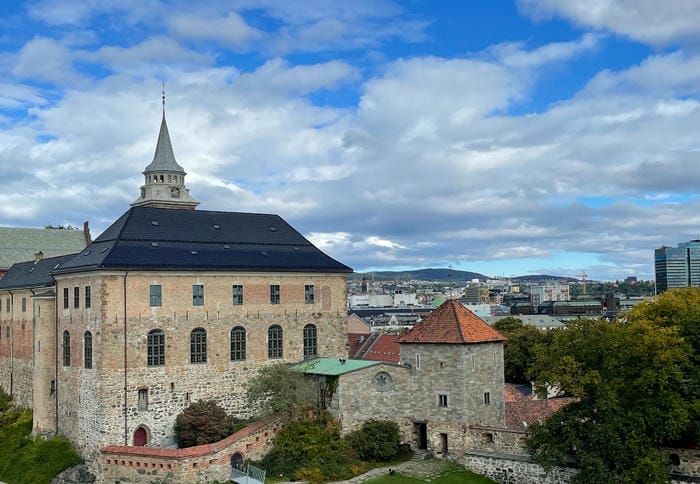
Situated on a strategic hill overlooking the Oslofjord, Akershus Fortress is a medieval castle marked by centuries of Norwegian history. Originally built in the 1290s by King Haakon V, the fortress has served various roles: a royal residence, military stronghold, and even a prison. Today, it remains one of Oslo’s most visited historical sites.
Walking through the fortress grounds feels like stepping back in time. Don’t miss the Akershus Castle, which now houses a museum with displays on medieval warfare, Norwegian history, and the mysteries surrounding the fortress. The grounds also provide stunning vistas of the city and fjord, making it a popular place for locals to stroll.
Guided tours, available in various languages, offer detailed insights into the fortress’s architecture, its role during the Second World War, and spooky legends surrounding its dungeons. History buffs will particularly find the combination of military and royal influences fascinating.
Open year-round, the fortress is especially magical in the summer when the surrounding park blooms with greenery. Admission to the grounds is free, though fees may apply for castle entrance or guided tours. A visit at dusk offers a unique, atmospheric experience as the city lights begin to twinkle below.
6. Stroll Through Aker Brygge
No visit to Oslo is complete without exploring Aker Brygge, the city’s vibrant waterfront district. Known for its modern architecture, lively atmosphere, and mix of shopping, dining, and entertainment options, Aker Brygge encapsulates the cosmopolitan side of Oslo.
Originally an industrial shipyard, the area has been transformed into a bustling promenade lined with upscale boutiques, art galleries, and outdoor restaurants offering stunning views of the Oslofjord. Seafood lovers will find this a culinary paradise, with options ranging from traditional Norwegian cuisine to international dishes.
In addition to shopping and dining, Aker Brygge is teeming with cultural opportunities. The Astrup Fearnley Museum of Modern Art, a strikingly designed building by Renzo Piano, displays contemporary works, often with a focus on themes related to globalization and modernity.
While Aker Brygge is delightful year-round, summer evenings make it particularly special as the sun sets over the fjord, creating a breathtaking backdrop. It’s also a popular place to embark on fjord cruises or simply relax on the benches lining the waterfront.
7. Visit the Norwegian Folk Museum
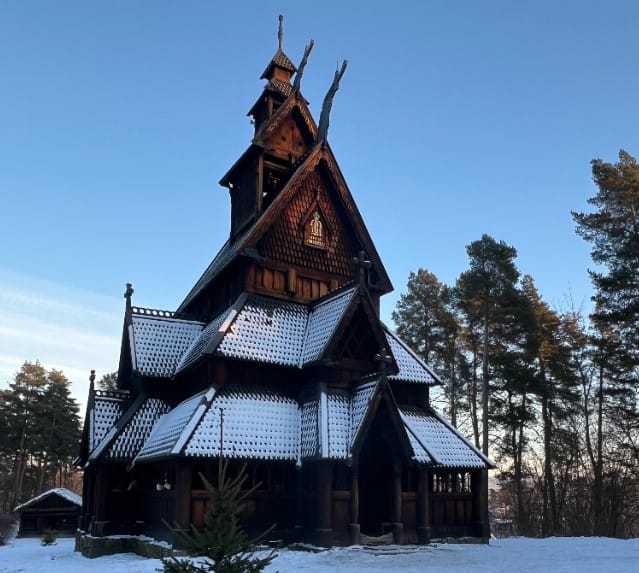
Step back in time at the Norwegian Folk Museum, an open-air treasure trove of cultural history. Located on the picturesque Bygdøy Peninsula, this museum features over 150 historic buildings relocated from different parts of Norway, each offering a glimpse into the country’s past. The star attraction is the Gol Stave Church, an intricately carved wooden building dating back to the 13th century.
As you wander through the museum’s reconstructed villages, you’ll encounter exhibits showcasing everything from traditional Sami culture to Norwegian folk art and heritage crafts. In the summer, costumed guides bring the displays to life with demonstrations of daily life in bygone eras, from baking traditional flatbread to spinning wool.
For families traveling with children, this is a particularly exciting stop. Seasonal activities like Christmas markets and midsummer festivals are worth planning your trip around. The museum is wonderfully immersive, making it a brilliant way to learn about Norway’s rural traditions and way of life. Allow two to three hours to visit, and don’t forget sturdy walking shoes—there’s plenty to explore outdoors.
8. Experience Holmenkollen Ski Jump and Museum
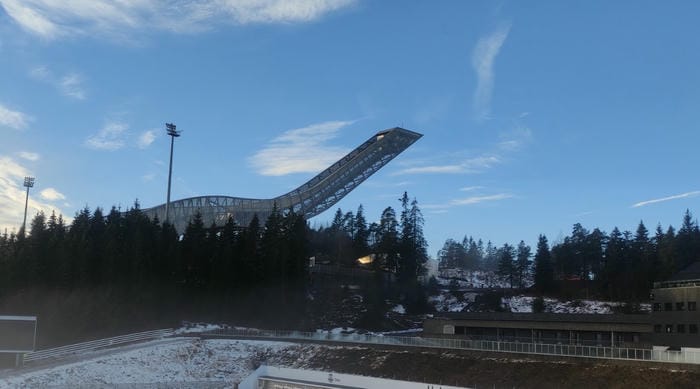
A symbol of Norway’s strong connection to winter sports, the Holmenkollen Ski Jump is both a breathtaking feat of engineering and a testament to the country’s skiing heritage. Located on the city’s outskirts, the ski jump towers over Oslo and offers some of the best panoramic views of the city and Oslofjord that you’ll find.
The Holmenkollen Ski Museum, situated beneath the jump, is the world’s oldest museum dedicated to skiing. Exhibits span over 4,000 years of skiing history, including ancient artifacts, polar expedition gear, and modern winter sports equipment. Adventurous visitors can also experience the thrill of ski jumping firsthand through a simulator ride.
For those visiting in the winter, Holmenkollen transforms into a snowy playground, with cross-country ski trails leading into the Nordmarka forest. It’s a hub of activity, especially during events like the Holmenkollen Ski Festival in March.
Even if winter sports aren’t your thing, the views from the top of the ski jump are simply unbeatable. Pro tip: Take the metro to Holmenkollen Station, then enjoy the scenic 1-kilometer walk uphill to the site. Make sure to dress warmly, as the winds at the top can be chilly!
9. Explore the National Gallery/National Museum
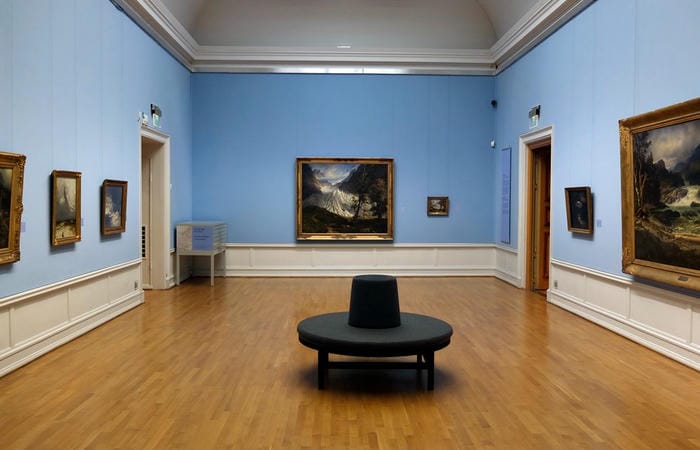
Art lovers will find their paradise at Oslo’s National Museum, a spotlight on Norwegian and international art. This newly consolidated museum replaces the former National Gallery, Contemporary Art Museum, and Crafts Museum, creating a centralized space to house some of Norway’s most cherished artistic treasures.
The museum’s star attraction is, of course, Edvard Munch’s iconic “The Scream”, but the collection extends far beyond his work. Highlights include paintings by Scandinavian masters like Johan Christian Dahl, alongside European greats such as Rembrandt, Monet, and Picasso. The museum also showcases contemporary art, design, and architecture across multiple floors.
The sleek and modern building itself is an architectural wonder, situated right in the heart of Oslo. Don’t miss relaxing on the rooftop terrace, which boasts striking views of the city’s skyline. Tourists are encouraged to set aside at least half a day to properly explore the galleries.
Tickets are reasonably priced, and Oslo Pass holders can enjoy free admission. Pre-purchasing tickets online is recommended during peak tourist seasons to save time at entry. The museum is an ideal rainy-day activity and a serene way to immerse yourself in creative expression.
10. Enjoy a Fjord Cruise
Few activities are as quintessentially Norwegian as a fjord cruise, and Oslo offers plenty of opportunities to explore its waterways. The Oslofjord, snaking its way from the city out to the sea, serves as both a gateway to Norway’s natural beauty and a relaxing retreat from urban life.
Cruise options range from short two-hour sightseeing tours to longer excursions venturing further into the fjord. Travelers can choose from traditional wooden sailboats or modern vessels, many of which come equipped with complimentary hot drinks (essential on a chilly day!). Popular cruise routes include views of Hovedøya Island, charming lighthouses, and coastal holiday homes that dot the fjord’s banks.
For those who prefer a bit of luxury, evening dinner cruises offer an unforgettable way to experience the fjord at sunset. If you’re visiting during winter, bundle up—special winter cruises provide warm blankets and stunning views of snow-capped islands.
Accessible year-round, fjord cruises are a fantastic way to unwind after a day of exploring the city. Pro tip: Book your tickets ahead of time during the busy summer months, and remember to bring a camera—the scenery is nothing short of spectacular!
11. Relax at Tjuvholmen City Beach
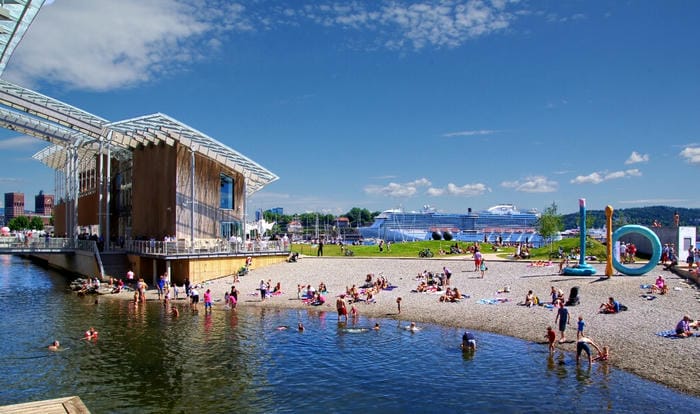
Yes, Oslo has a beach! Located near Aker Brygge, Tjuvholmen City Beach is the perfect place to unwind and dip your toes into Nordic waters. A hidden gem tucked away in the bustling urban waterfront, this small but charming beach is a tranquil spot to relax during the warmer months.
Surrounded by modern art installations and sculpture parks, Tjuvholmen offers a unique blend of natural beauty and creative expression, making it ideal for a lazy afternoon or a casual picnic. Nearby, you’ll find the Astrup Fearnley Museum, a contemporary art highlight that complements your visit beautifully.
Families and sunseekers can enjoy safe swimming areas here, while the nearby piers are popular with locals casting fishing lines or simply enjoying the view. For foodies, Tjuvholmen boasts some of Oslo’s finest restaurants and cafes, so you don’t have to venture far for a meal or drink.
Visiting in colder months? This area transforms into an atmospheric spot for walks, with cozy cafes offering warm drinks as you admire the serene winter landscape. Make sure to check out the avant-garde buildings and sculptures in the vicinity while you’re there—they’re as much a part of the attraction as the beach itself.
12. Visit the Royal Palace
Standing proudly at the end of Karl Johans Gate, the Royal Palace is both a grand architectural landmark and the official residence of the Norwegian monarch. Built in the mid-19th century for King Charles III John, the palace is surrounded by lush gardens and offers a stately glimpse into Norway’s royal heritage.
In the summer months, visitors can join guided tours for an insider’s view of richly decorated state rooms, banqueting halls, and royal interiors. The tours provide fascinating insights into Norway’s political history and royal traditions, making it an informative experience as well.
One of the highlights of a visit is witnessing the changing of the guard ceremony, which occurs daily at 1:30 p.m. It’s a formal yet charming spectacle, drawing onlookers to the palace grounds regardless of the weather.
Even if you don’t venture inside, the Palace Park offers a serene escape. Locals and tourists alike enjoy strolling through its pathways, and the park is especially enchanting during the fall when the leaves turn brilliant shades of orange and yellow.
Pro tip: If you’re short on time, plan your visit to coincide with the changing of the guard, and then take a leisurely walk through the nearby park to enjoy a slice of Oslo’s royal charm.
13. Wander Through Grünerløkka District
If culture, creativity, and a laid-back vibe are more your speed, look no further than Grünerløkka, Oslo’s coolest district. Formerly an industrial area, this neighborhood has transformed into the city’s hipster haven, brimming with vintage stores, street art, cozy cafes, and trendy restaurants.
Spend a leisurely morning exploring its charming streets, stopping by Markveien, which is home to several secondhand shops and boutique outlets. Highlights include Fretex, a treasure trove of unique clothing, and Blå, a venue famous for its eclectic Sunday market and riverside art installations.
Grünerløkka is also a foodie paradise. Sample delicious wood-fired pizzas at Villa Paradiso or grab artisanal coffee at one of the district’s many independent cafes. The lively nightlife scene here is equally unmissable, with craft beer bars and live music venues drawing locals and visitors alike.
For a dose of green space, take a breather in Sofienberg Park or enjoy a riverside walk along Akerselva. This bohemian district exudes creativity and charm, making it a must-visit for those wanting to experience Oslo’s youthful and alternative side.
14. Explore Ekeberg Sculpture Park
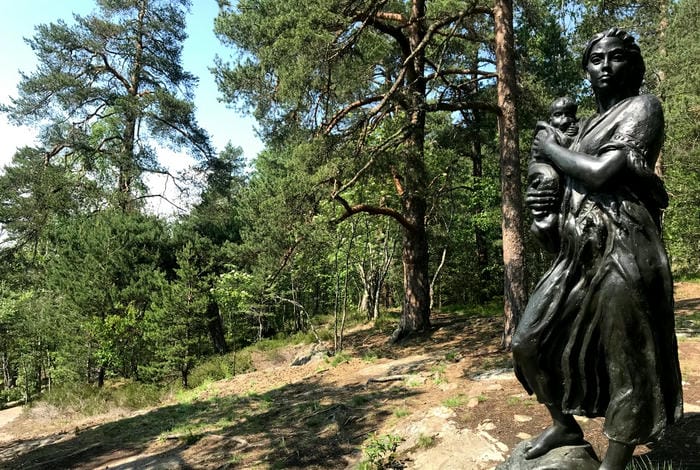
For art lovers and nature enthusiasts alike, Ekeberg Sculpture Park is a captivating destination that showcases a seamless blend of art and natural beauty. Located in the hills overlooking Oslo, the park boasts a collection of over 30 sculptures by renowned artists such as Salvador Dalí, Louise Bourgeois, and Damien Hirst. Each artwork is thoughtfully placed within the natural terrain, creating a dialogue between sculpture and landscape.
What sets Ekeberg Sculpture Park apart is its unique location. The park is nestled within lush woodlands and offers hiking trails that meander through its breathtaking scenery, offering stunning views of the Oslofjord and the city below. This is the perfect spot for a long stroll, where every turn reveals a new piece of art or a picturesque vantage point.
One of the standout features of the park is James Turrell’s Skyspace, an immersive installation where visitors can experience the shifting light and colors of the sky in a tranquil, meditative setting. Families will also enjoy the play areas and open space, making this park ideal for all ages.
To make the most of your visit, arrive in the late afternoon to enjoy soft, golden-hour light that enhances the ambiance of both the sculptures and the surrounding forest. There is no entrance fee, and easy access is provided by public transportation or a short drive from the city center.
15. Visit the Viking Ship Museum
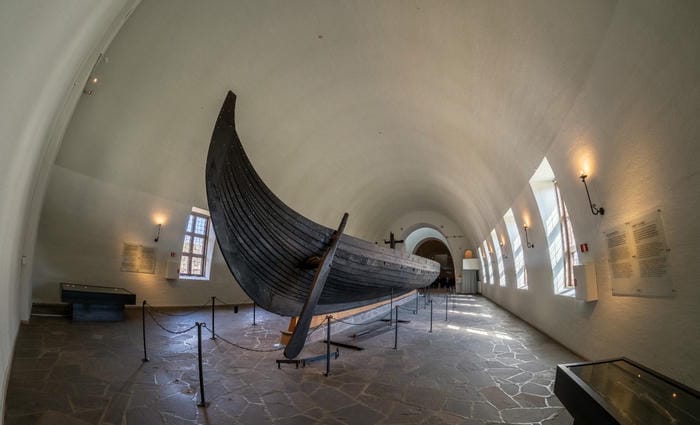
Dive deep into Norway’s Viking-era heritage at the Viking Ship Museum, one of Oslo’s most iconic and historically significant attractions. This world-renowned museum houses an awe-inspiring collection of Viking ships and artifacts that speak volumes about the ingenuity, craftsmanship, and culture of the seafaring Norse people over 1,000 years ago.
The museum’s centerpiece exhibits include three exquisitely preserved Viking ships—the Oseberg, Gokstad, and Tune—all of which were excavated from burial mounds. These magnificent vessels, originally used for ceremonial burials, are a window into the Viking way of life, providing insights into their mastery of shipbuilding and their beliefs about the afterlife.
In addition to the ships, the museum showcases intricately carved wooden objects, household tools, clothes, and even skeletal remains found during excavations. The detailed narratives accompanying the displays make it an enriching experience for history buffs and casual visitors alike.
The museum is part of the Museum of Cultural History, with plans for an expanded and remodeled visitor experience underway. If you’re visiting before the renovation is complete, be aware that some exhibits may be limited. Regardless, the Viking Ship Museum offers a rare opportunity to connect with the legends of Norse explorers in an up-close and personal way.
Easily accessible via the Bygdøy Peninsula ferry or public bus, the museum pairs well with nearby attractions like the Fram Museum and the Norwegian Folk Museum.
16. Discover Damstredet & Telthusbakken Streets
Take a step back in time as you wander along Damstredet and Telthusbakken, two picturesque streets steeped in history and charm. These hidden gems are often overlooked by tourists, making them perfect for those seeking a quieter and more authentic experience of Oslo.
Located just a short walk from the city center, these cobblestone streets are characterized by their beautifully preserved wooden houses, some of which date back to the 18th century. The houses are painted in warm, vibrant tones, making the streets a photographer’s dream. Unlike the grandeur of Oslo’s bustling attractions, these streets tell the story of residential life in a bygone era.
Telthusbakken, in particular, offers an added bonus—the quaint gardens along the street. These lush, flower-filled plots are lovingly maintained by residents and provide a peaceful, countryside-like atmosphere in the heart of the city. At the end of Telthusbakken, you’ll find Gamle Aker Church, Oslo’s oldest building, which is another historical treasure worth a visit.
Set aside 1–2 hours for a leisurely stroll, making sure to bring comfortable shoes for the uneven cobblestones and your camera to capture the storybook-like charm. These streets are particularly enchanting in spring and summer when the gardens are in full bloom, but their snowy winter look is equally magical.
17. Take a Riverside Walk Along Akerselva River
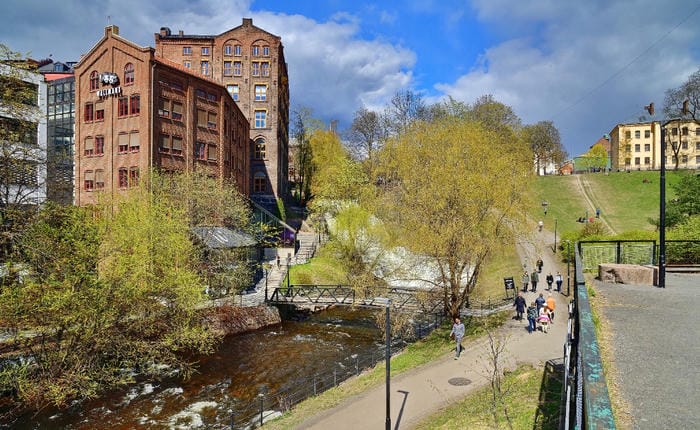
For a peaceful escape into nature without leaving the city, embark on a picturesque walk along the Akerselva River. This serene waterway runs through Oslo, offering an idyllic path that weaves through lush greenery, historic industrial buildings, and modern urban areas.
The Akerselva walk is versatile; you can start at Maridalsvannet (the city’s main water source) and follow the river south for approximately 8 kilometers until it reaches Oslofjord. Along the way, discover charming waterfalls, small wooden bridges, and old factories that have been repurposed into cultural spaces. Keep an eye out for Vøyenfallene, one of the river’s most beautiful waterfalls, and Mathallen, a vibrant food hall where you can stop for a bite.
The route also highlights Oslo’s sustainable urban planning. The river is teeming with life—ducks, trout, and even the occasional otter—making it a favorite for nature enthusiasts and city dwellers alike. In autumn, the trail is a riot of colors, with golden foliage lining the path for a postcard-perfect scene.
This walk is suitable for all ages and is accessible year-round, though winter visitors should watch out for icy patches. Whether you’re an avid hiker or just looking for a relaxing stroll, a walk along Akerselva River provides a refreshing perspective on Oslo’s harmonious relationship with nature.
FAQs Section
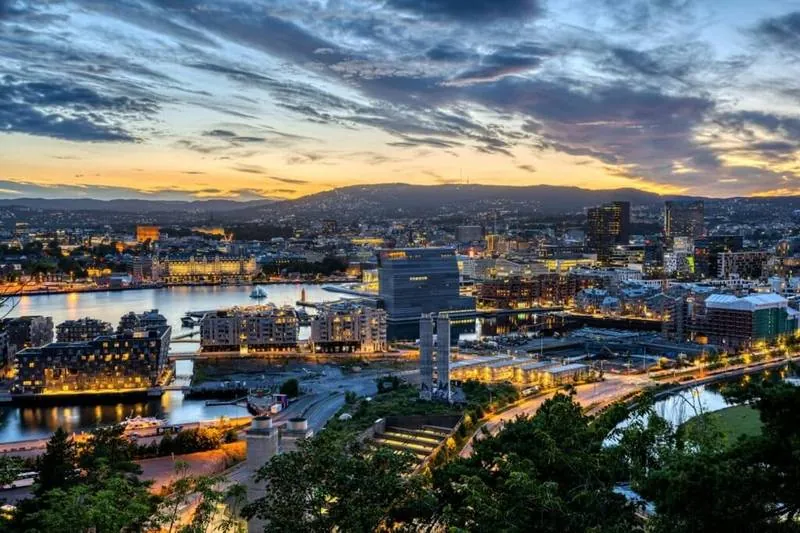
- What is the best time to visit Oslo?
- The best time to visit Oslo depends on your preferences. Summer (June–August) offers mild weather, festivals, and outdoor activities like fjord cruises. Spring and Fall are quieter, with fewer tourists and stunning foliage. For snow lovers, Winter (December–February) transforms Oslo into a winter wonderland with skiing and Christmas markets.
- How can I get around Oslo?
- Oslo’s public transport system is efficient and easy to use. The Ruter network includes trams, buses, ferries, and the metro, ensuring you can access all attractions. Consider purchasing the Oslo Pass, which grants unlimited public transport and discounts at many top attractions. Walking and biking are also great options in the compact city center.
- Is Oslo expensive for tourists?
- Oslo is known for being pricey, but there are ways to save. The Oslo Pass offers excellent value, and many attractions—like Vigeland Sculpture Park—are free. Opt for local supermarkets and street food instead of dining out for every meal. Plan ahead to take advantage of free museum days or discounted transport passes.
- What are some family-friendly activities in Oslo?
- Oslo is very child-friendly! Visit the Norwegian Folk Museum, the Fram Museum, or the Munch Museum for interactive exhibits. Kids will also love Tjuvholmen Beach, sculptures at Ekeberg Park, and boat trips on the Oslofjord.
- What local foods should I try in Oslo?
- Don’t leave without trying Norwegian classics like rakfisk (fermented fish), klippfisk (dried cod), or wholesome fårikål (lamb stew). End your meal with krumkake—a delicate rolled Norwegian cookie. Many cafes also serve freshly baked cinnamon buns and coffee.
Conclusion:
